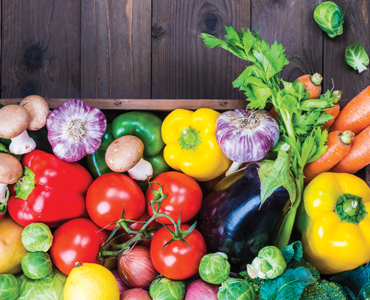
Focus on Food Safety: Best practices for best before dates
By Dr. Amy Proulx
Food Safety Best before dates Editor pick food waste
Reducing food waste is top of mind for many consumers. Whether for environmental concerns or cost control, avoiding food waste at the consumer level often focuses on best before dates (BBDs). Consumers have the tendency to throw out food that has reached its BBD under the assumption the food is no longer safe for consumption.
As a manufacturer, it may be worth reviewing your BBD practices using regulatory and food safety perspectives.
Definitions
The term, “best before date,” is commonly used with consumers and manufacturers. However, the regulated term in Canada is “durable life date” (DLD), derived from the Food and Drug Regulations (FDR) Definitions. Quoting from FDR, “Durable life means the period, commencing on the day on which a prepackaged product is packaged for retail sale, during which the product, when it is stored under conditions appropriate to that product, will retain, without any appreciable deterioration, its normal wholesomeness, palatability, nutritional value and any other qualities claimed for it by the manufacturer; (duree de conservation).” Expiry dates are a unique format of regulated DLD, specifically intended for foods for special dietary use like infant formula, fortifiers, and human milk substitutes. “Best before” is the term commonly applied by manufacturers, as it is better understood by consumers for being the threshold time for quality and safety.
Food products with a shelf life of less than 90 days are required to have a DLD on the package, except for prepackaged fresh fruit and vegetable products, prepackaged individual portions for food service or mobile vending, or prepackaged donuts. Products with shelf life longer than 90 days are not required to have a DLD. Typically, manufacturers use DLD coding to provide lot traceability because it can be used as a voluntary declaration for products longer than 90 days shelf life.
Setting up a durable life date
The responsibility is on the manufacturer for determining if a product requires a DLD and the typical shelf life. In general, shelf life can be categorized into four primary forms: pathogen outgrowth, microbial spoilage, loss of nutrition quality, or loss of organoleptic quality.
Using a risk-based approach, pathogen outgrowth is the greatest concern, followed by microbial spoilage, and this is most common for high and intermediate moisture foods. Manufacturers should be using sample programs, which hold and monitor the quality of product, and allow for observation of the shelf life. Manufacturers can retain their own samples and analyze for microbiological growth over a period. Alternatively, they can ask contract labs or Technology Access Centres to conduct shelf-life testing.
For products where the application of process controls and proper storage allow for extended shelf life, the concern may be nutritional and organoleptic or sensory property. This would include low moisture foods, frozen foods, or canned and hermetically sealed foods. Generally, the composition of the food changes minimally with respect to macronutrients and minerals. The primary concern for shelf life and “best before” declarations would be vitamins or a vitamin-based nutrient content claim as vitamins tend to be the most labile over time. This would be evaluated by a retained sample program, combined with nutrition chemistry testing at an accredited lab.
If the “best before” date is based on product quality, such as loss of colour, staling, or oxidation, sensory or organoleptic analysis is the most common way to determine shelf life. Here the risk to consumers is not related to food safety, but it’s based on the reputation of the company for delivering quality products. This can be evaluated by sensory difference or acceptability methods.
Different strategies
Grocers and other retailers use BBDs as part of their traceability and inventory control. Grocers want to purchase product with sufficient durability, so that they can have adequate time to sell the inventory.
If a product is using voluntary durable life declarations, there is the potential to use “packaged on” date coding. While this strategy could be helpful for consumers and retailers, it could also be misleading, as consumers do not have a clear perception of the typical time product is in distribution and retail channels before taking it home.
Using risk-based food safety knowledge and regulatory innovation can indeed improve food waste outcomes.
Dr. Amy Proulx is professor and academic program co-ordinator for the Culinary Innovation and Food Technology programs at Niagara College, Ont. She can be reached at aproulx@niagaracollege.ca.
This column was originally published in the February/March 2023 issue of Food in Canada.
Print this page